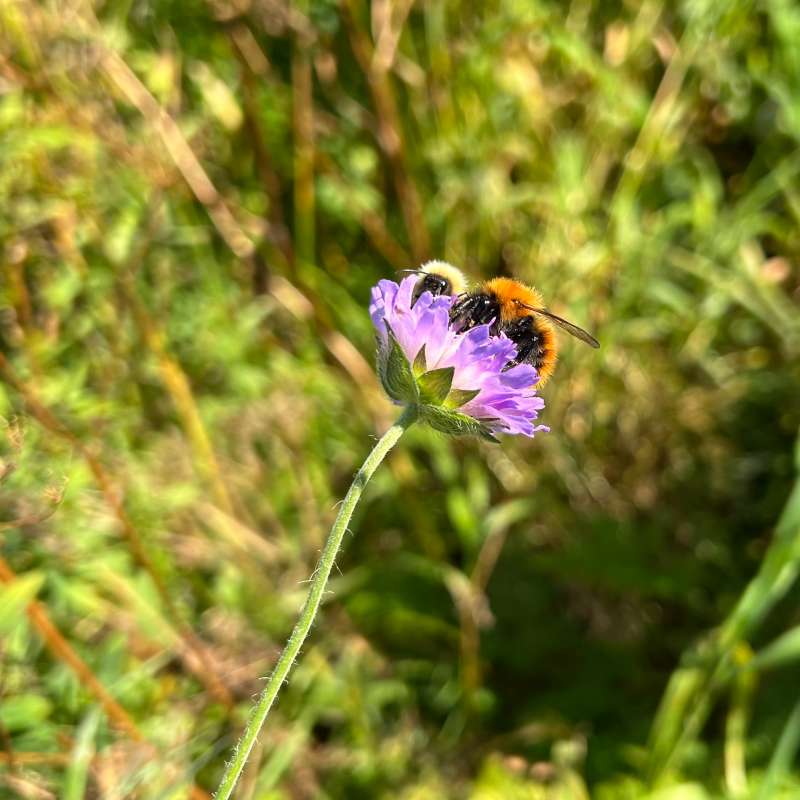Erik Solbu
Forsker
(+47) 975 84 012
erik.solbu@nibio.no
Sted
Trondheim
Besøksadresse
Klæbuveien 153, bygg C 1.etasje, 7030 Trondheim
Sammendrag
For å hjelpe forvaltning og forskere i arbeidet med bevaring av kulturlandskapet, har vi i dette prosjektet utviklet en nettside som sammenstiller data fra ulike kilder: Landbruksdirektoratet, Miljødirektoratet og NIBIO. Dataene blir oppsummert på kommunalt nivå og gir innsyn i søknader for forskjellige regionale klima- og miljøprogram, hvilke produksjonstilskudd som er søkt og hvilke semi-naturlige naturtyper som er kartlagt. Fremstillingen er både over tid (8 – 10 år) og geografisk. Denne sammenstillingen kan for eksempel brukes til å illustrere fordelingen av ulike tiltak for kulturlandskap og biomangfold, hvilke husdyr som potensielt er tilgjengelig for beite og beregne avstand mellom naturtyper for å vurdere konnektivitet og mulige områder for tiltak.
Sammendrag
1. We propose that the ecological resilience of communities to permanent changes of the environment can be based on how variation in the overall abundance of individuals affects the number of species. Community sensitivity is defined as the ratio between the rate of change in the log expected number of species and the rate of change in the log expected number of individuals in the community. High community sensitivity means that small changes in the total abundance strongly impact the number of species. Community resistance is the proportional reduction in expected number of individuals that the community can sustain before expecting to lose one species. A small value of community resistance means that the community can only endure a small reduction in abundance before it is expected to lose one species. 2. Based on long-term studies of four bird communities in European deciduous forests at different latitudes large differences were found in the resilience to environmental perturbations. Estimating the variance components of the species abundance distribution revealed how different processes contributed to the community sensitivity and resistance. Species heterogeneity in the population dynamics was the largest component, but its proportion varied among communities. Species-specific response to environmental fluctuations was the second major component of the variation in abundance. 3. Estimates of community sensitivity and resistance based on data only from a single year were in general larger than those based on estimates from longer time series. Thus, our approach can provide rapid and conservative assessment of the resilience of communities to environmental changes also including only short-term data. 4. This study shows that a general ecological mechanism, caused by increased strength of density dependence due to reduction in resource availability, can provide an intuitive measure of community resilience to environmental variation. Our analyses also illustrate the importance of including specific assumptions about how different processes affect community dynamics. For example, if stochastic fluctuations in the environment affect all species in a similar way, the sensitivity and resistance of the community to environmental changes will be different from communities in which all species show independent responses.
Sammendrag
Det er ikke registrert sammendrag

Divisjon for matproduksjon og samfunn
Agricultural mitigation measures and the value of water quality improvements
Agriculture is one of the main sources of water pollution in Norway, and an important contributor to GHG emissions.

Divisjon for matproduksjon og samfunn
Tiltak i landbruket og verdien av forbedret vannkvalitet
Landbruket er en av de viktigste kildene til vannforurensing i Norge, og samtidig en stor bidragsyter til klimautslipp.

Divisjon for matproduksjon og samfunn
WINGS - Pollinatorvennlige kulturlandskap: Løsninger for forvaltning av leveområder under press
Pollinatorene er truet. Dette får konsekvenser både for det biologiske mangfoldet og matsikkerheten vår. I WINGS skal vi utvikle løsninger for å etablere mer pollinatorvennlige kulturlandskap.
